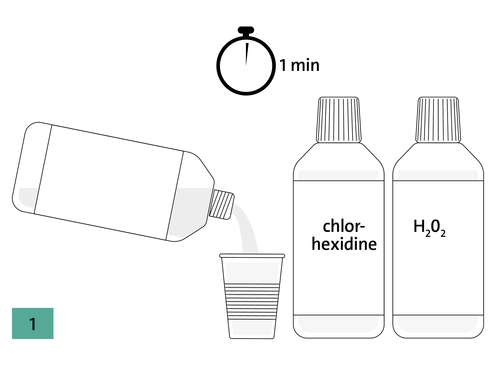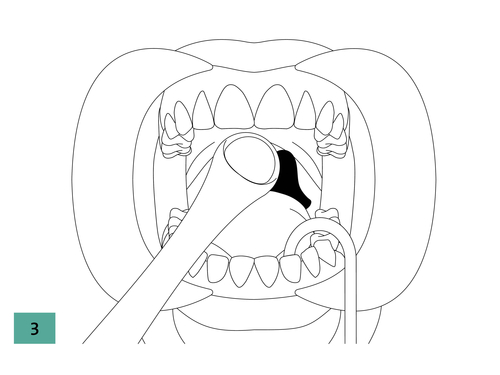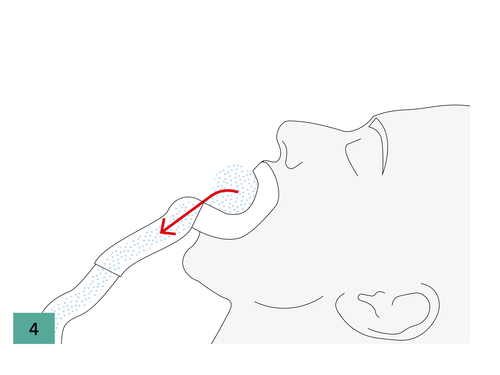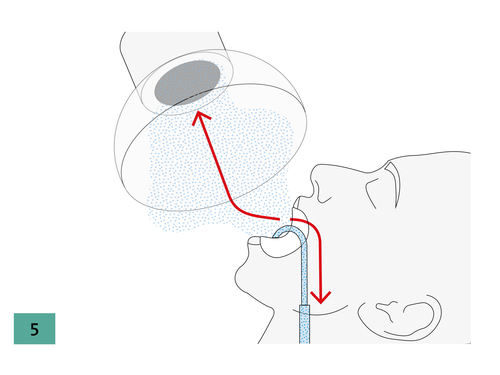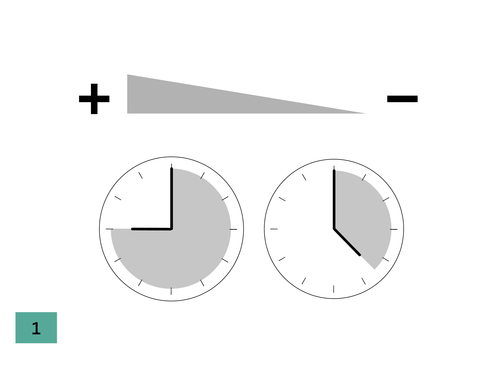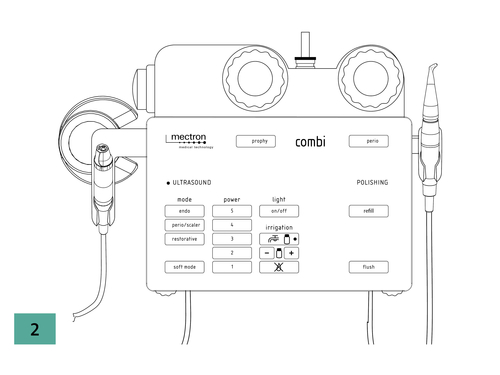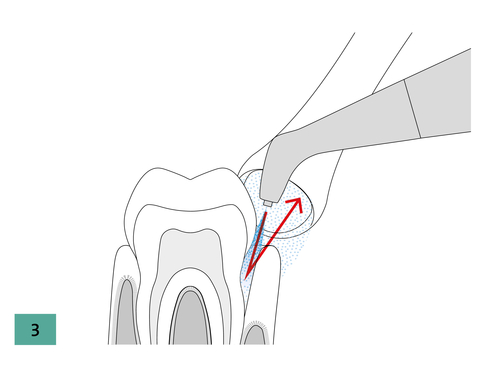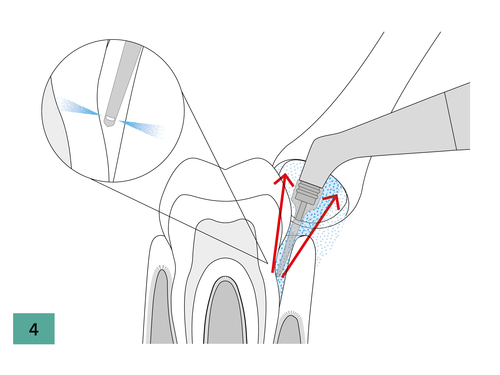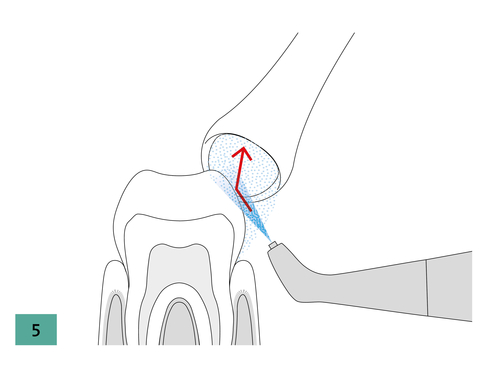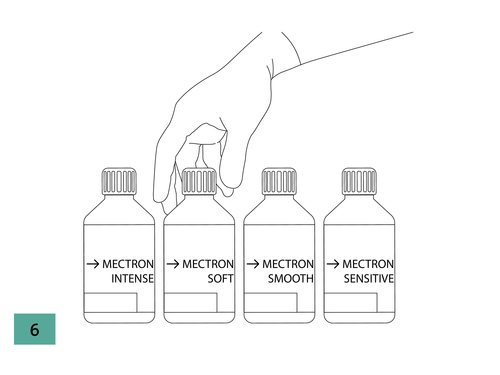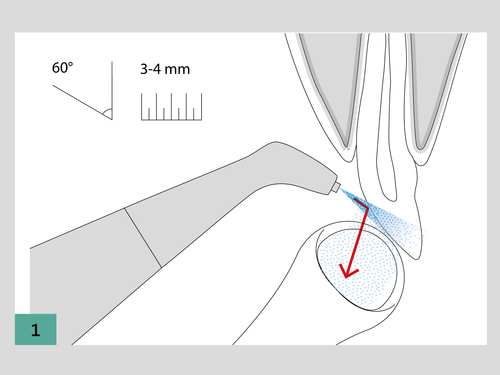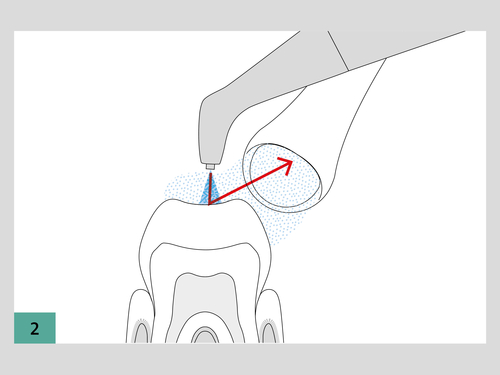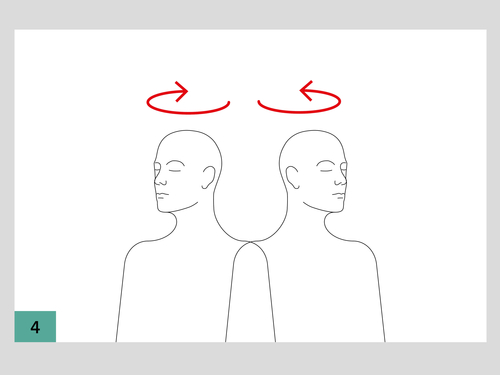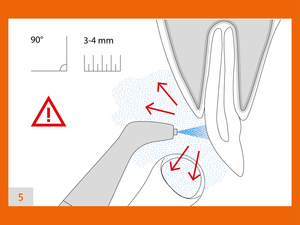Before beginning the session, a pre-rinse for 1 minute with H2O2 1.5% and chlorhexidine 0.20% is recommended to reduce the bioburden. This reduces the patient’s bioburden by upto 70%.
RECOMMENDATIONS FOR USING MECTRON PROPHYLAXIS EQUIPMENT
GENERAL CONSIDERATIONS:
HOW TO MINIMIZE AEROSOL:
ULTRASOUNDS:
- For biofilm or non-calcified plaque, reduce the power and irrigation level of the ultrasound devices (Fig. 1).
- If possible, use a device that can precisely regulate both the water supply and the range of movement of the insert in order to minimize the production of aerosol. Where possible, it’s recommended to use the SOFT MODE function (Fig. 2+3).
DISINFECTION LIQUID TO USE:
The pipes and all parts of the irrigation circuit are made of a material that is compatible with the main clinical solutions and the liquids generally used for the treatments included in the intended use of the device, such as:
- Water (distilled, demineralised, potable)
- Saline solution 0.9%• Chlorhexidine < 0.3%
- Ethyl alcohol < 1.5%
- Citric acid < 5%
- Povidone-iodine < 12%
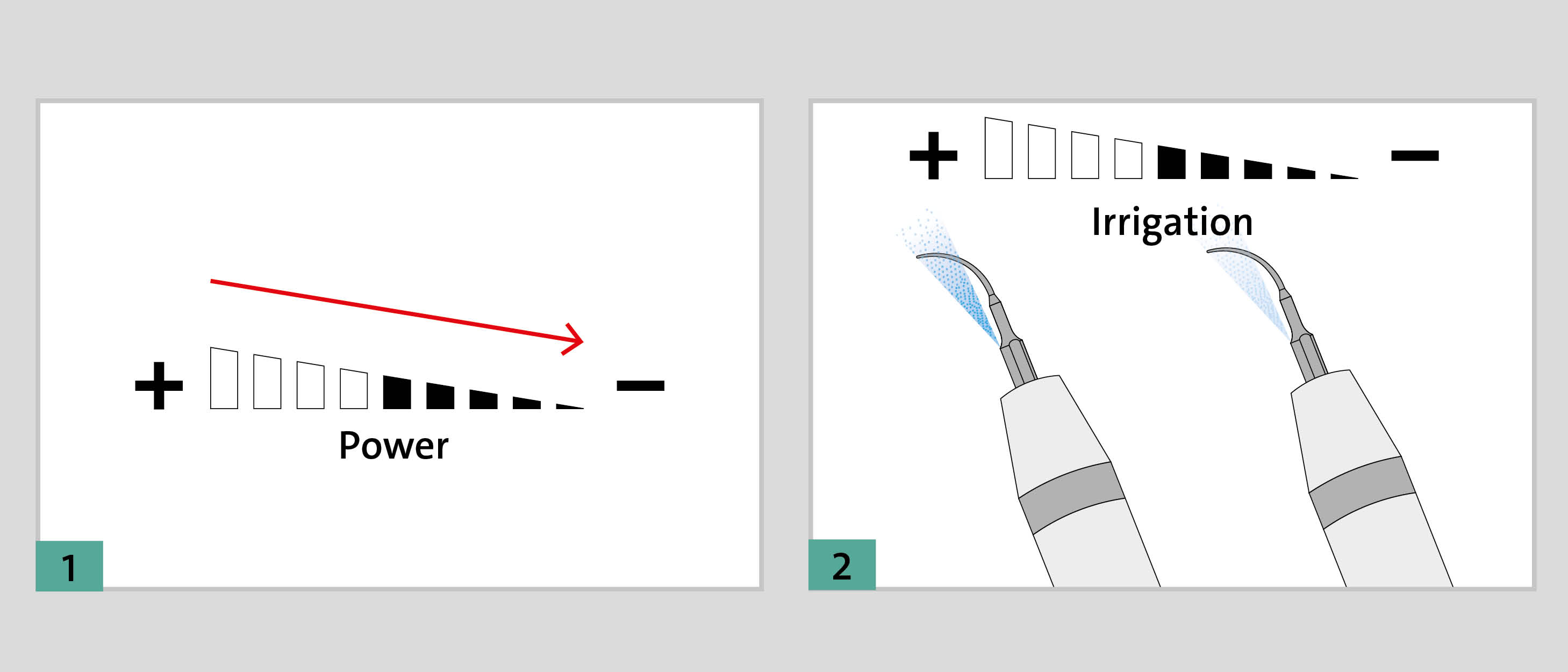
CAUTION: DO NOT USE the following as disinfectants:
- highly alkaline products (pH > 9)
- products containing hydrogen peroxide
- products containing abrasive substances
- products containing aldehydes, amides and/or phenols, acetone or methyl ethyl ketone.
They can dechlorinate and/or damage plastic materials.The manufacturer, Mectron, shall not be held responsible for any damage caused byclinicians’ use of the aforementioned substances.
AIRPOLISHING:
USING HANDPIECES AND POSITION OF PATIENT:
It is recommended that the handpiece be inclined as shown in the figures below to avoid any splatter and to reduce the risk of dispersion of potentially contaminated material and therefo repotential infection.
The air-polisher handpiece must be kept 3-4 mm from the tooth surface and inclined at 60° from the vestibular and lingual surfaces of the anterior teeth.
NOTE: Incorrect positioning of the air-polisher handpiece entail higher risk.
The incorrect angle of the handpiece nozzle may cause refl ux splatter, with consequent excessive production of aerosol or may not allow for proper irrigation, with an accumulation of powder and suboptimal treatment. A 90° angle causes the powder to disperse on both sides and increases the aerosols and the risk of infection.
